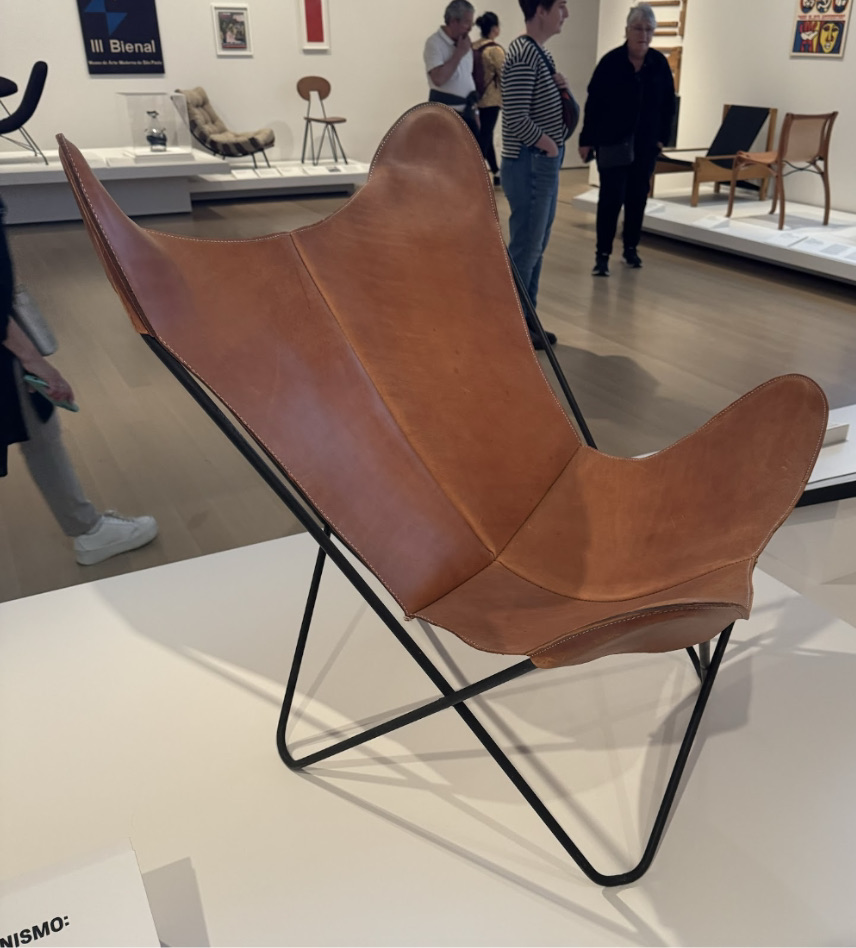Childhood is a central theme of the Metropolitan Museum of Art’s new rooftop commission “Abetare” by Petrit Halilaj. Halilaj grew up during the Kosovo War from 1997-1999. At age 13, he became a war refugee and moved to Albania. He used art to cope with the incredible trauma he experienced as a child, creating peaceful worlds that he could escape to when life became bleak. It also became a way to physically preserve his childhood. This feeling of preservation became the inspiration for the “Abetare.” Halilaj began working on the installation when he visited home, where his old schoolhouse from before the war was being demolished. While visiting, he noticed the graffiti on school desks. The markings went back years before the war and in a way, cataloged the history of the children who came to the school. Realizing the power of these simple doodles, Halilaj went out all across the former countries of Yugoslavia to look at desks and preserve the history left behind by children.
Without understanding the context of the sculptures, at first glance, I questioned the artist’s vision and attempt at art. My first impression of the sculptures was that they looked out of place and I left the installation questioning the Met’s investment.
However, when walking home, I read up on the installation and started thinking more critically about the piece, seeing how it symbolically tied to Halilaj’s vision. Tying the installation to his traumas from the Kosovo war, Halilaj used metal from war-torn wreckage to create the sculptures. With the addition of context and research, the sculptures transform into powerful symbols of ingenuity and creativity in the face of hardship.
In an interview with the museum curator, Halilaj explained how, as a child, his education was incredibly limited due to a lack of school supplies and basic essentials. Kids living through the Kosovo War had so little they couldn’t even doodle, resorting to etching drawings into desks. These drawings brought to life the memories and materials of buildings destroyed by the war. Just as the kids used the limited resources they had for creative expression, Halilaj was limiting the normal conventions and tools for making a sculpture from metal from the war. But through the interview, it seems Halilaj just used any old sheet metal he could find. Asking a gallery guide, they said the metal used had no significant meaning to his knowledge. Though disappointed by the revelation that this theory was false, I was surprised that the piece that I had initially dismissed had evoked a critical analysis like that.
I think one of the biggest hindrances to Halilaj’s installation vision was how the Met decided to arrange his pieces. Most of the marketing material only features two of the sculptures made, the pair of birds and the spider. These I think were the standouts due to how they used space. With the 3D space, the sculptures are allowed to be more dynamic, evoking the boundless creativity of child doodling. For example, the spider free from the confines of 2D space was allowed to spread its legs out in all directions and tower over viewers. The thing that allows these two sculptures a more dynamic feel is that they aren’t resting against a wall or backdrop. One of the sculptures was hidden on the roof with only a corner of the installation visible above the shingles. Another was tucked away in the shadows of a park bench. It felt as though the people who installed the sculptures haphazardly tossed these precious remembrances around. The sculptures also did not have any descriptive tags to give them context. All the background information I learned on the piece was locked away online.
Personally, I think that Halilaj’s art needs wide open space to look its best. The Art Basel in Paris did a much better job of making a neutral space for the sculptures to pop out. They also utilized more 3D space with sculptures hanging from the walls and ceiling in more dynamic poses. What I also liked about the Paris exhibit was the inclusion of the desks with the actual carvings that inspired the sculptures. I think having a connecting point to the place where these drawings came from via the desks should have been included in the Met installation.
Beyond giving context to the sculptures, I think the desks help create some of the magic that Halilaj felt himself. In an interview with the Met, Halilaj talked about the creative process of finding the drawings. He traveled all over the former Yugoslavian countries digging through old cellars and trash heaps looking for desks. He thought of it as a treasure hunt, looking at all the inscriptions and drawings. Museum-goers in Paris could also recreate that treasure hunt by looking for the drawings on the desks that were now reborn as sculptures.
“Abetare” was a good reminder of the importance of context for art. Halilaj had a beautiful story about reclaiming your identity through art locked away behind abstract ideas. Regardless of your viewpoint on more experimental art forms, it’s worth informing yourself of the whole picture. Sure, sometimes abstract art pieces will be garbage even with context. I saw plenty of other pieces in the museum with far less creative inspiration or artistic appeal. Asceticism is good, but make sure you manage it properly. Otherwise, you might let stories get lost in time.





































































































































































































